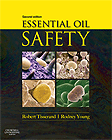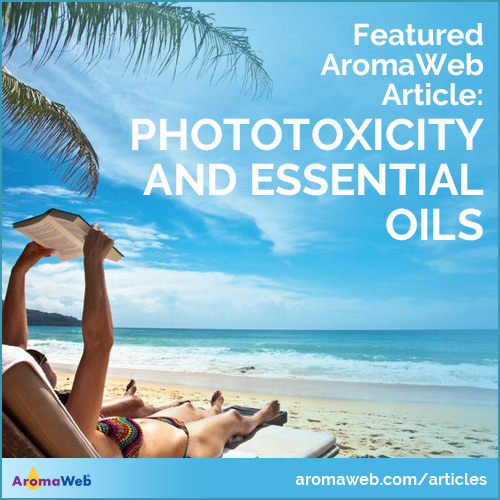Phototoxicity and Essential Oils

Photosensitization and phototoxicity can occur when certain essential oil constituents (natural chemicals found in particular essential oils), particularly furocoumarins (FCs), react when exposed to ultraviolet light. Inflammation, blistering and reddening/burning of the skin are common.

Not all cold pressed citrus essential oils are phototoxic, and steam distilled citrus essential oils are apparently not phototoxic. "The FCs are relatively non-volatile molecules and are generally found in expressed (cold-pressed) citrus fruit oils, but not in distilled citrus fruit oils." [Robert Tisserand and Rodney Young, Essential Oil Safety (Second Edition. United Kingdom: Churchill Livingstone Elsevier, 2014), 85.]
The most detailed information that I have found regarding photosensitization and phototoxicity and essential oils can be found on pages 84-90 of edition two of Essential Oil Safety by Robert Tisserand and Rodney Young. It is recommended reading for more thorough information on phototoxicity and photosensitivity.
List of Commonly Available Essential Oils That are Phototoxic
This is not necessarily a complete list.
- Angelica Root Essential Oil
- Bergamot (Cold Pressed)
- Bitter Orange (Cold Pressed)
- Cumin
- Fig Leaf Absolute
- Grapefruit (Cold Pressed)
- Lemon (Cold Pressed)
- Lime (Cold Pressed)
- Mandarin Leaf
- Opopanax
- Rue
- Tagetes
Oils That Might Be Phototoxic
- Clementine (Cold Pressed)
- Combava Fruit
- Skimmia
- Angelica Root Absolute
- Angelica Root CO2
- Celery Leaf
- Celery Seed Absolute
- Cumin Seed Absolute
- Cumin Seed CO2
- Khella
- Lovage Leaf
- Parsnip
Citrus Oils That Are Not Considered Phototoxic
- Bergamot FCF (FCF Has the Bergaptene/Furanocoumarins Removed)
- Bergamot (Steam Distilled)
- Blood Orange (Cold Pressed or Steam Distilled)
- Lemon (Steam Distilled)
- Lime (Steam Distilled)
- Mandarin (Cold Pressed or Steam Distilled)
- Sweet Orange (Cold Pressed or Steam Distilled)
- Petitgrain
- Satsuma (Cold Pressed or Steam Distilled)
- Tangelo (Cold Pressed or Steam Distilled)
- Tangerine (Cold Pressed or Steam Distilled)
- Yuzu Oil (Cold Pressed or Steam Distilled)
Source for the Above Bulleted Lists: Robert Tisserand and Rodney Young, Essential Oil Safety (Second Edition. United Kingdom: Churchill Livingstone Elsevier, 2014), 85, 87, 370-371.
Usage Recommendations Per Robert Tisserand and Rodney Young
"There is generally no phototoxic risk if the oils are used in a product that is either not applied to the body or is washed off the skin, such as shampoo, bath preparation or soap. However, essential oils can adhere to the skin if used in a sauna or steam inhalation. There is no risk if the skin to which the oils are applied is covered in such a way as to prevent UV rays from reaching them."
"We recommend that skin treated with phototoxic oils at levels higher than those maximum use levels, should not be exposed to UV light for 12-18 hours."
[Robert Tisserand and Rodney Young, Essential Oil Safety (Second Edition. United Kingdom: Churchill Livingstone Elsevier, 2014), 88.]
Recommended IFRA Maximum Usage Levels can be found on page 86 of Essential Oil Safety or can be found as a pdf file directly through IFRA: http://www.ifraorg.org/en-us/standards-library/s/phototoxicity.
For More In-Depth Information:

Essential Oil Safety by Robert Tisserand and Rodney Young
The second edition of Essential Oil Safety by Robert Tisserand and Rodney Young contains several pages of in-depth information regarding photosensitization and phototoxicity and is recommended reading for greater in-depth information. Essential Oil Safety is a 784-page powerhouse of information that is invaluable to the serious aromatherapy student, aromatherapy practitioner, health care professional, and everyone seriously interested in understanding individual essential oils, their constituents, usage guidelines, safety precautions and contraindications. Read a review of this book.
